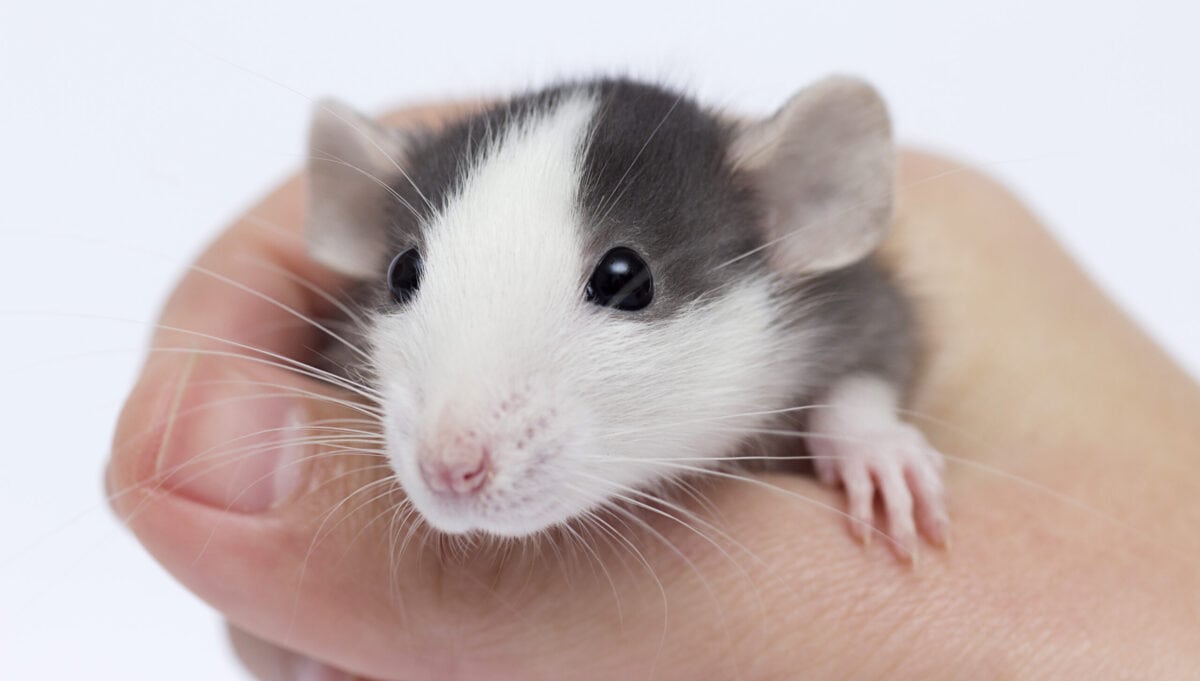Introducing a pet into your family is a great way to teach kids about responsibility, care, and empathy, and there are many proven health benefits of owning a pet. But if you rent your home, live in an apartment, or haven’t the time or space to meet the needs of a dog or cat, then you need a pocket pet!
A pocket pet is a small, reasonably low maintenance family pets full of personality. Take a look at our pocket pet guide to see which pet is right for your family.
Furry pets
Furry pets are always winners in the cute and cuddly department, with their soft fur, tiny paws and bright eyes. We recommend:
Guinea pigs
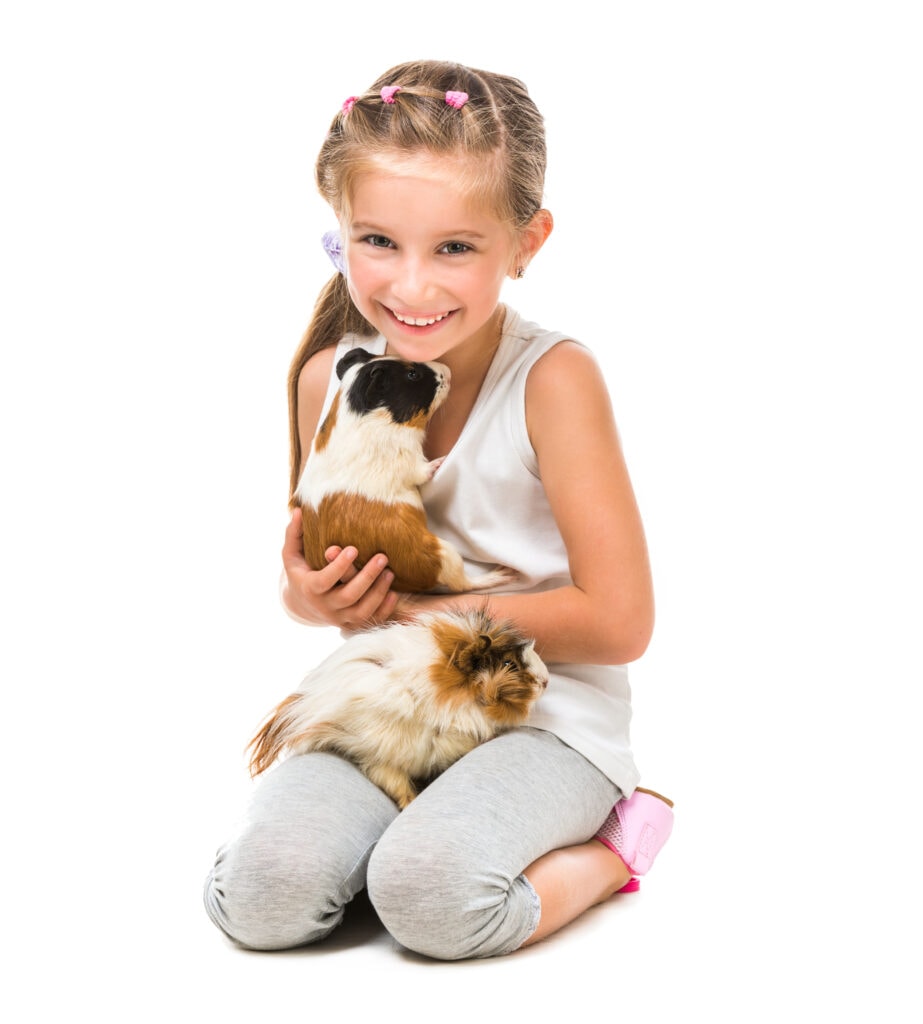
Guinea pigs are easy to handle and love to snuggle in for a cuddle whilst nibbling a tasty vegetarian treat. They can be kept indoors or out, but if kept mainly inside, give your guinea pig daily access to fresh grass within a safe enclosure in the garden, and if kept outside, make sure their hutch is safe from predators and extreme temperatures and includes somewhere for them to hide from threats. In cold or stormy weather, your little guinea pig friend would love to come inside to keep warm.
Guinea pigs are very friendly and will happily play with toys such as cardboard rolls or cat toys with bells. Your child can even teach their guinea pig friend tricks, which is a great way to bond!
Guinea pigs are herbivore and require a plant-based diet, supplemented by food pellets from a pet store. Always supply access to fresh clean water and a safe wooden chewing toy especially designed for rodents to help them keep their teeth in tip-top condition.
Find out more about how to care for your guinea pig here.
Pros: Relatively easy to handle and low maintenance.
Cons: Need quite a bit more space for exercise than you might expect. Susceptible to ticks and mites if kept outdoors.
Lifespan: 4-8 years
Social: Best kept in same-sex groups, minimum of two.
Rats
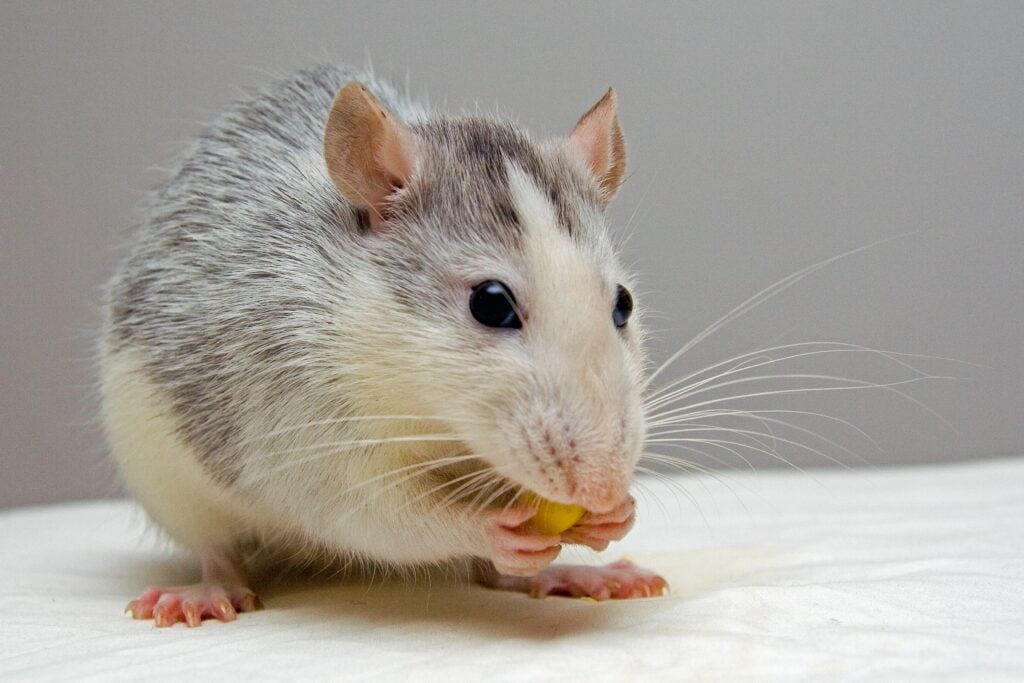
Rats make surprisingly good pets! They are sociable, intelligent, and love to interact with people. Anyone who has ever owned rats will tell you that they have heaps of personality, far removed from their somewhat gross and scary representation in books and on tv.
Male rats are bigger than females and perfect for those who want a laid-back snoozy kind of lap pet. Female rats are more energetic and inquisitive and will rush to greet you and come out of their cage to play. A rat will learn its name and come when called, and you can teach them lots of tricks.
Rats should always be kept indoors, and while they will happily play with you and socialise during the day, it’s worth noting that they are naturally most active at dusk and dawn, which might be a deciding factor in considering which room they should live in!
Rats love a large, cluttered cage with lots of toys, cosy hammocks, and things to climb, hide, and forage for hidden food in.
Pros: Friendly, gentle, clean and intelligent.
Cons: Subject to respiratory infections and tumours requiring veterinary treatment.
Lifespan: 1-3 years.
Social: Best kept in small same-sex groups.
Mice
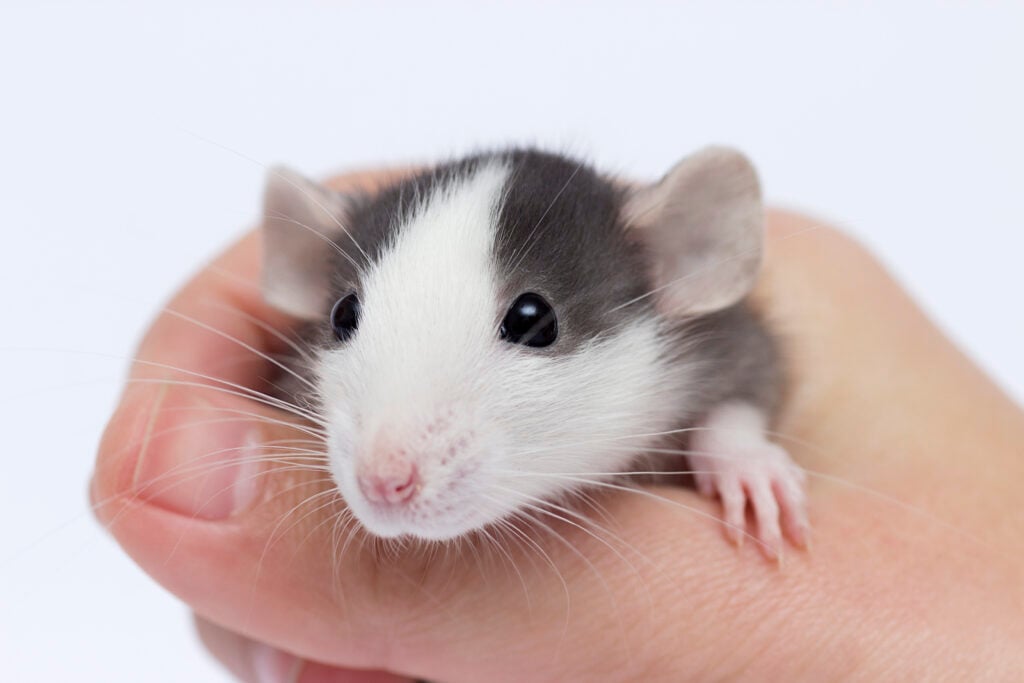
Mice are undeniably cute, but they’re also very small and fast, so better suited to older children if they’re going to be handled. They can be very entertaining and love lots of toys to play with, climb and chew.
Being tiny, mice are relatively cheap to own and feed. They require a secure well-ventilated cage (you don’t want them escaping!) placed inside the home away from drafts and direct sunlight. Mice should be kept in pairs or small groups of the same sex. If buying male mice, make sure they are litter mates as they are territorial and will fight other male mice they are introduced to.
Pros: Low maintenance and low cost.
Cons: Love to chew and try to escape. Scent marking can be a smelly problem. Will breed rapidly if males and females are housed together.
Lifespan: 1-3 years
Social: Best kept in small same-sex groups.
Hairless pocket pet
Furry pets can trigger allergies in some people. If allergies are a concern for you, you can still own a tiny pocket pet with these hairless varieties!
Fish
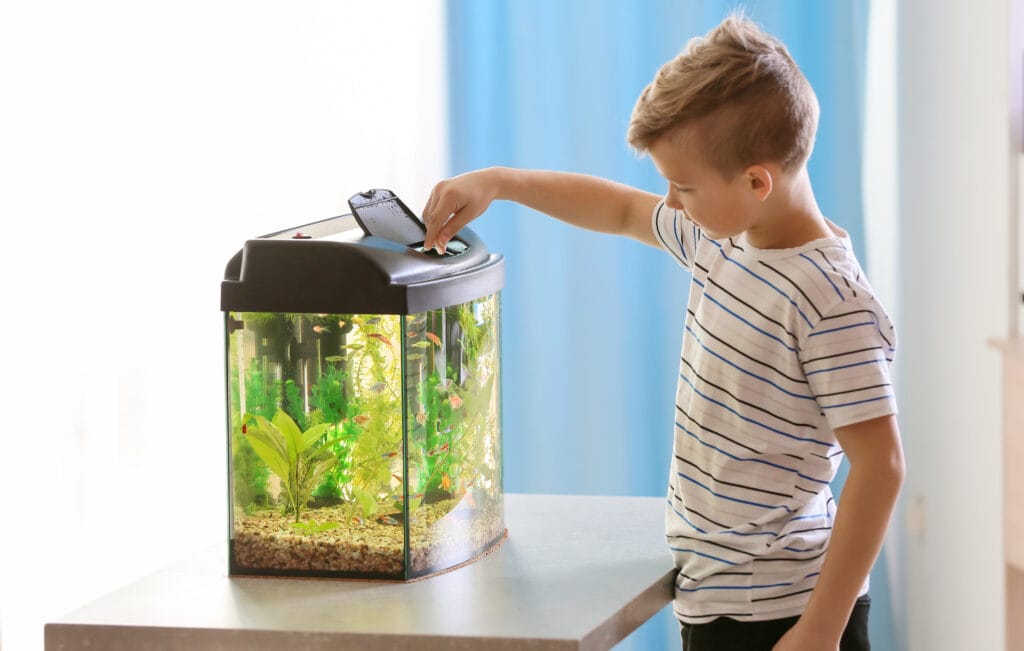
Fish are a great choice for a starter pet, especially cold-water fish that require a less complicated tank set up. Even very small children can help with feeding (supervised!) and cleaning the tank, and fish are very soothing to watch.
Check out your local aquarium for advice on the right fish for you. Some fish are solo dwellers, like the beautiful bettas (fighting fish), while others, like goldfish species, prefer company. The number and type of fish you choose will determine the required tank size and set-up.
Pros: Low maintenance and very quiet.
Cons: Not a lot of scope for bonding and interaction. Can be difficult to transport if you move house.
Lifespan: Average 1-5 years, depending on species.
Social: Speak to staff at your local aquarium to determine the best social group for your preferred species of fish.
Hermit Crabs

Hermit crabs are not true crabs because they don’t have a permanent shell. Instead, they inhabit the discarded shells of other molluscs and snails. They are also ‘land crabs’ spending much of their time out of water, but they do need constant access to salt water to maintain health, as well as fresh water for drinking. Your pet store will provide the right saline and purification supplements to add to your tap water.
Although relatively easy to care for, your hermit crabs will require the right environment to thrive. This means a good-sized tank kept in a temperature range of 24-27 degrees, at least 5cm depth of clean sand, a variety of spare shells of different shapes and sizes to grow and move into, a regular misting with a spray bottle to maintain humidity, driftwood type structures to climb (hermit crabs love to climb!), and lots of other crabs for company. You can have fun with your pocket pet hermit crabs by buying brightly painted shells, and creating obstacle courses for them.
Hermit crabs have quite individual personalities and are generally happy to be carefully handled.
Pros: Low maintenance, can be handled, hypo-allergenic.
Cons: Bigger crabs may attack smaller crabs.
Lifespan: Several months to several years.
Social: Keep in groups of similar sized crabs.
Axolotl
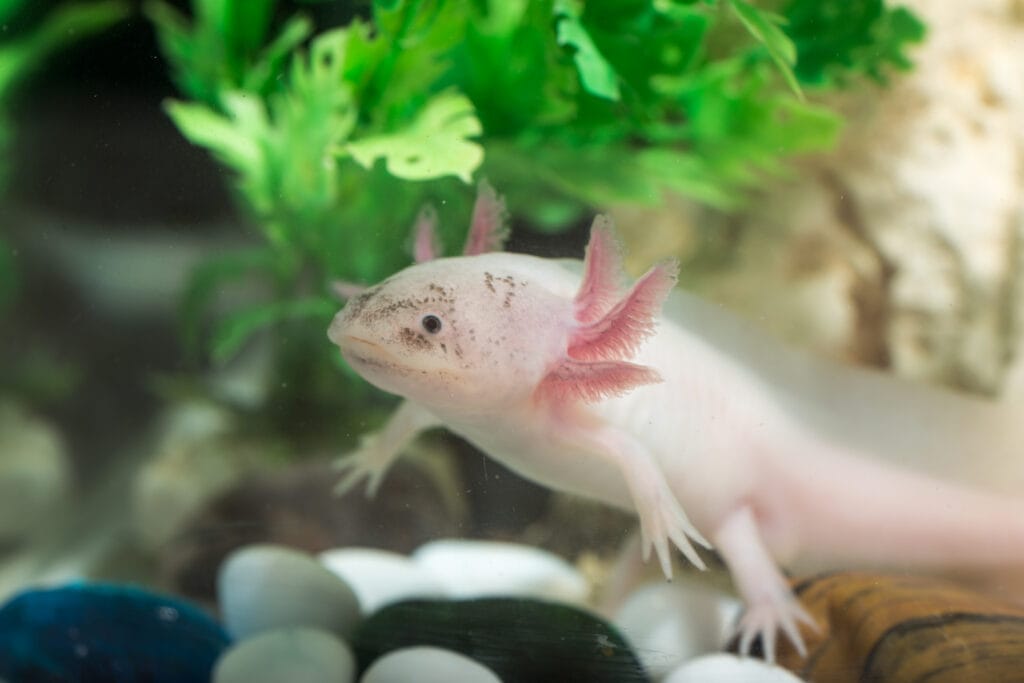
Also known as the Mexican walking fish, axoltls are the very cute larval stage of salamander. They are amphibian but prefer to spend most of their time in water, though they can be gently handled – infrequently – beneath the water’s surface. They are best suited as pets for responsible older children and teenagers.
Axolotls require a cold-water tank about 60-90cm long with plants and gravel, positioned away from strong light as their eyes are quite sensitive. Pelleted food is available as a supplement, but axolotls do require live feeding and enjoy earthworms, small feeder fish, and insects, all of which should be purchased from a pet store to prevent introducing diseases.
Axolotls are quite long-lived, which is something you should be prepared for when making the commitment to owning one.
Pros: Unusual, placid, fairly hardy.
Cons: Medium maintenance. Can be difficult to transport if you move house. Might scare you by playing dead!
Lifespan: 12-20 years.
Social: Happy to live alone, or in pairs of similar sizes.
Feathered pets
Exotic birds make wonderfully entertaining and interactive pets, but they can be difficult to manage and are better suited to older children and teenagers.
Pet birds require a cage large enough to fly around in and perform acrobatics, with a variety of perches of different widths and textures to keep their feet healthy. Their diet consists of a specialised seed mix supplemented by fresh fruit and vegetables.
Finches and canaries
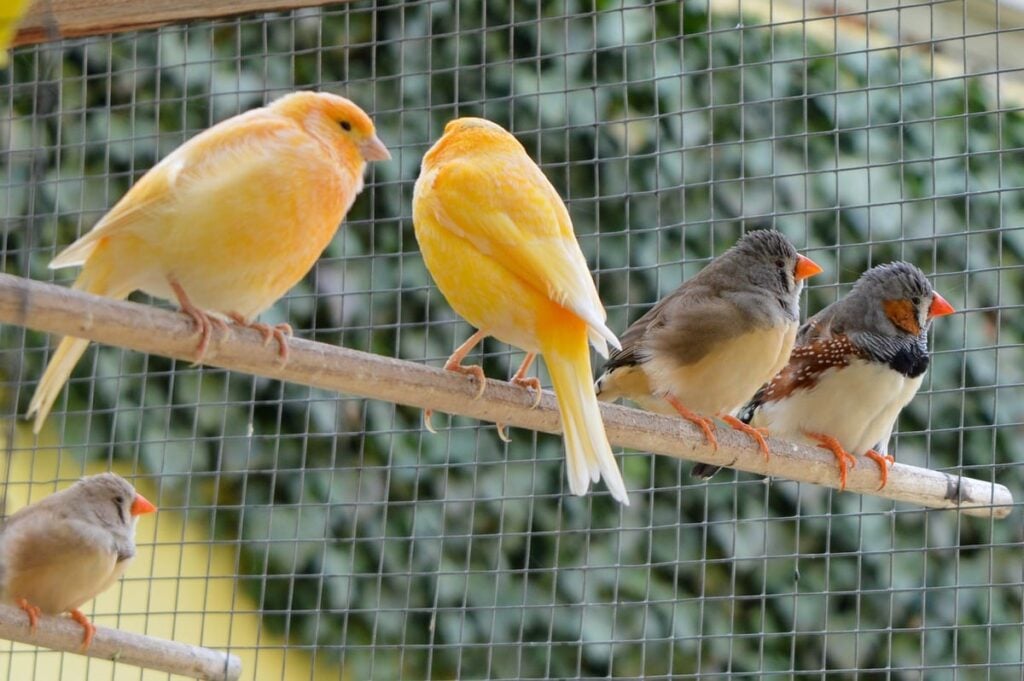
Finches and canaries are small birds that don’t require a lot of direct human interaction. They’re fairly easy to care for, content to remain in their cage, and will chirp and sing when happy. (Note: Only male canaries sing, and their song is quite beautiful!)
Pros: Easy to care for. Rarely bite.
Cons: Can be noisy and messy.
Lifespan: 5-10 years.
Social: Finches love company and are best kept in pairs or small groups. Canaries prefer to be alone.
Budgies and cockatiels

Budgies (also known as parakeets) and cockatiels are more gregarious and interactive. They love to socialise with their humans and will learn to whistle tunes and follow simple commands.
As members of the parrot family they like to climb, so a large cage with horizontal bars and wooden ladders is best. They are also very active and need toys like bells, balls and mirrors to keep them entertained. Budgies and cockatiels love time outside their cage to fly around and be with their humans.
Pros: Sociable, intelligent, and interactive.
Cons: Can be noisy and messy. Require a lot of attention.
Lifespan: Budgies up to 8 years, cockatiels up to 20 years.
Social: Happy to live alone (provided they get lots of attention from you!) or in groups.
Choosing the right small pocket pet for your child
When choosing a pocket pet for your child, consider your child’s age and abilities. Small pets can be fragile and need to be handled with care. If scared or handled roughly they may nip or become stressed, so young children should always be supervised when interacting with their pets. Do thorough research on ALL the pros, cons, and care requirements before heading to the pet store.
Be prepared for the majority of care, including feeding and cleaning out enclosures, to fall to you as the adult. As your child grows and learns, they can gradually take on more of the responsibilities.
At Families Magazine we advocate responsible pet ownership, and just like big pets, small pets can require veterinary attention for illnesses, accidents, or health maintenance. Please consider your budget should a pet emergency arise before committing to the welfare of a family pet.
Thinking of adopting a pet? Click here! If you are wondering what the best dog might be for your family, read our article!
This article was featured in Issue 47 of our printed magazine, published August 2021.

